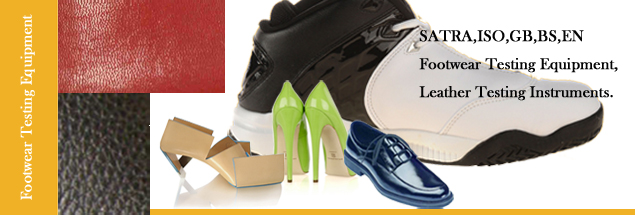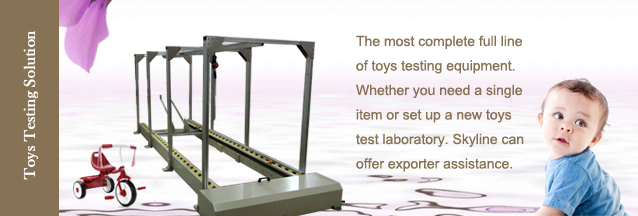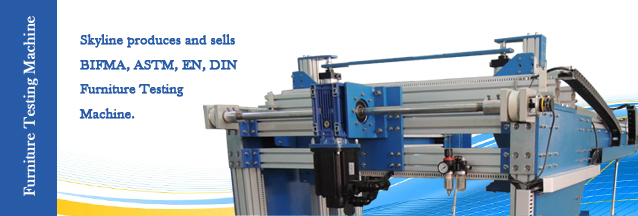 Toys Testing Equipment
Toys Testing Equipment Footwear Testing Equipment
Footwear Testing Equipment Tensile Testing Machine
Tensile Testing Machine Environmental Test Chamber
Environmental Test Chamber Building Material Flammability Test Equipment
Building Material Flammability Test Equipment Paper Testing Equipment
Paper Testing Equipment Spectacle Frames Testing Equipment
Spectacle Frames Testing Equipment Oil Analysis Testing Equipment
Oil Analysis Testing Equipment Lab Test Equipment
Lab Test Equipment Electronic Testing Equipment
Electronic Testing Equipment Stationery Testing Equipment
Stationery Testing Equipment Flammability Test Equipment
Flammability Test Equipment Furniture Testing Machine
Furniture Testing Machine Textile Testing Equipment
Textile Testing Equipment
 See toy safety from Labubu burst fire! These tests are essential for the proliferation of inferior fakes
See toy safety from Labubu burst fire! These tests are essential for the proliferation of inferior fakes- 2025/10/30
- See toy safety from Labubu burst fire! These tests are essential for the proliferation of inferior fakes Recently, the tide play circle has been brushed by Labubu! The cute design has become an inst...
 See toy safety from Labubu burst fire! These tests are essential for the proliferation of inferior fakes
See toy safety from Labubu burst fire! These tests are essential for the proliferation of inferior fakes- 2025/10/30
- See toy safety from Labubu burst fire! These tests are essential for the proliferation of inferior fakes Recently, the tide play circle has been brushed by Labubu! The cute design has become an inst...
 Indonesia's Government visit our factory and make cooperation
Indonesia's Government visit our factory and make cooperation- 2025/8/20
- Exciting News from SKYLINE INSTRUMENT! We’re thrilled to announce the successful visit of our esteemed client from Indonesia’s Government Textile & Leather Testing Lab project! After a detailed f...
- More>
Children's toys to do what testing? What equipment is needed?
Children are the flowers of the motherland, so children's toys must have strict testing before they leave the factory and pass the test before they can flow into the hands of small children. The following Skyline will list several instruments used in toy testing.
A: false finger touchable probe (also known as a simulated finger, false finger) is used to detect whether a part of the toy or certain parts can be touched by the probe. Touchable Probe A is used for toys used by children 36 months and younger (under 3 years of age). 2. Touchable Probe B is used for toys used by children 36 months and older (over 3 years of age). 3. If the toy spans two age groups, two probes should be used for separate testing.
B: Accessibility Probes , determines whether the probe can reach any part or parts of the toy. The probe simulates an infant or child's finger touching the reachable point or edge of the toy, which can then be tested on the sharp point or sharp edge of the toy. The Accessibility Probe is designed for two age groups. Probe A is used for infant toys from 0-36 months and Probe B is used for infant toys from 37-96 months.
C: Sharp Edge Tester for determining whether the edge portion of a toy or object is a sharp edge where there is an unreasonable risk of injury. Sharp edge testing requirements Sharp edges are not allowed on toys under 36 months; functional sharp edges may exist on toys 37 months to 96 months, but must be accompanied by a warning statement. Applies to toys used by children 96 months and younger.
D:ISO8124-1 Sharp Point Tester, used to detect the presence of sharp points on toys in accessible locations that are hazardous to safety. Suitable for wooden toys and toys used by children aged 96 months and under.
- ·How important is heel fatigue testing for women's high heels?
- ·Why is it necessary to test toys?
- ·Toy testing standards and test items
- ·What is included in the testing of footwear equipment?
- ·What are the requirements for the combustion performance of building materials in Canada?
- ·What is the test standard for textile and clothing inspection report?

 Toys Testing Equipment
Toys Testing Equipment Footwear Testing Equipment
Footwear Testing Equipment Tensile Testing Machine
Tensile Testing Machine Environmental Test Chamber
Environmental Test Chamber Building Material Flammability Test Equipment
Building Material Flammability Test Equipment Paper Testing Equipment
Paper Testing Equipment Spectacle Frames Testing Equipment
Spectacle Frames Testing Equipment Oil Analysis Testing Equipment
Oil Analysis Testing Equipment Lab Test Equipment
Lab Test Equipment Electronic Testing Equipment
Electronic Testing Equipment Stationery Testing Equipment
Stationery Testing Equipment Flammability Test Equipment
Flammability Test Equipment Furniture Testing Machine
Furniture Testing Machine Textile Testing Equipment
Textile Testing Equipment

 English
English 中文
中文 Español
Español française
française العربية
العربية Русский
Русский







